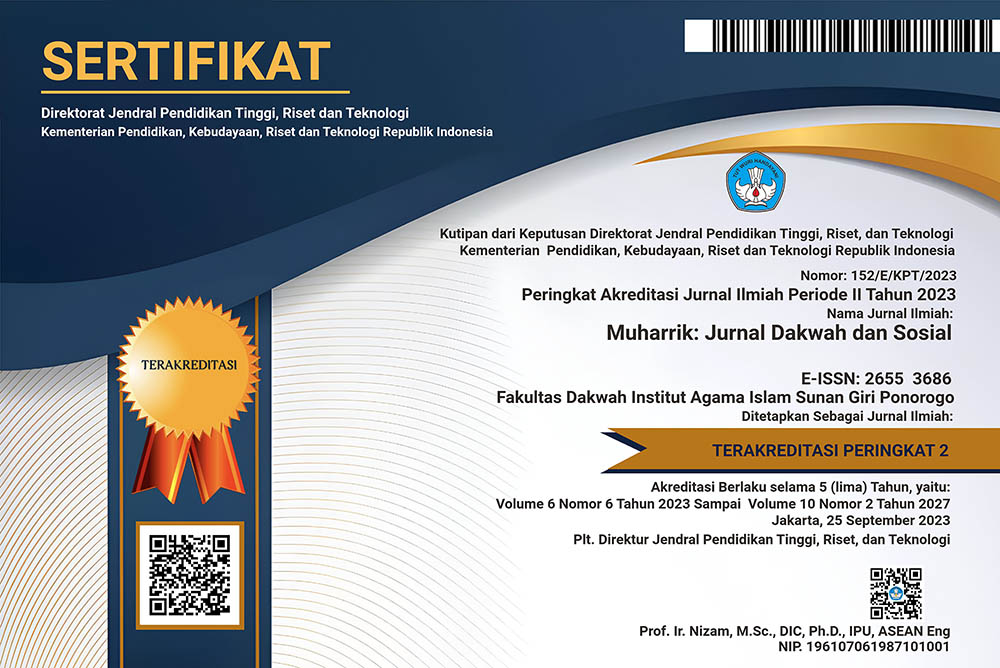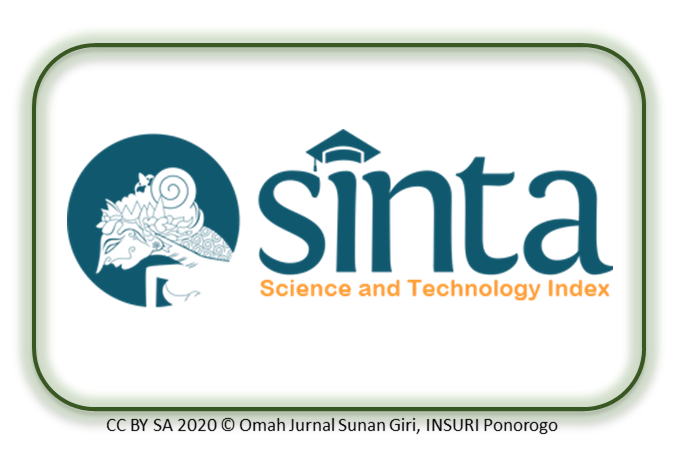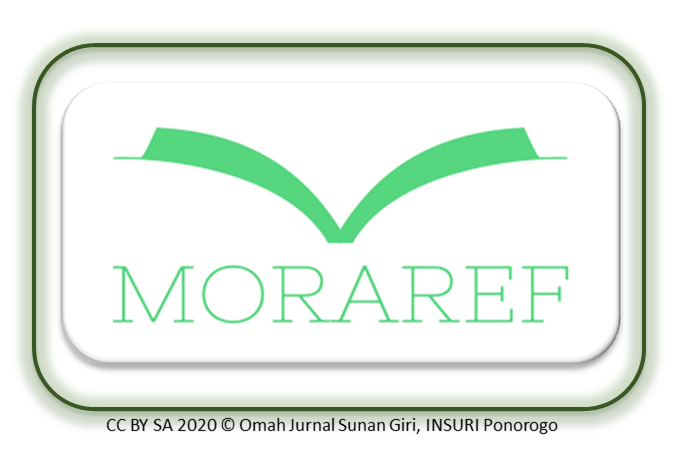The Role of Religious Tourism in Religious Moderation: A Case Study on Hindu Places of Worship in North Sumatra
DOI:
https://doi.org/10.37680/muharrik.v6i2.4657Keywords:
Religious tourism, Hindu places of worship, religious moderation, non-HinduAbstract
This study examines the impact of religious tourism, particularly in Hindu places of worship in North Sumatra, on religious practices and levels of religious moderation among adherents, especially non-Hindus. Religious tourism is increasingly popular globally, including in Medan, Indonesia. This study aims to analyze how religious tourism influences religious practices and levels of moderation among adherents, specifically non-Hindus in the area. Participation in religious tourism can influence the process of religious moderation, whereby tourists' experiences at places of worship can open their minds to a more inclusive and tolerant understanding of religious diversity. This can foster the development of moderate attitudes in religious practices and interfaith interactions. Non-Hindu adherents who visit have the opportunity to expand their symbolic understanding of Hinduism, thereby promoting tolerance and better understanding. The results of this study have significant implications for promoting religious moderation and interfaith harmony in Indonesia. This article suggests that religious tourism can be used to enhance interfaith dialogue and support efforts toward religious moderation in various religious communities. These implications can assist policymakers and religious practitioners in designing more inclusive and supportive programs and policies to build a more tolerant and moderately religious society.
Downloads
References
Apollo, M., Wengel, Y., Schänzel, H., & Musa, G. (2020). Hinduism, ecological conservation, and public health: What are the health hazards for religious tourists at Hindu temples? Religions, 11(8), 1–14. https://doi.org/10.3390/rel11080416
Aukland, K. (2016). Krishna’s Curse in the Age of Global Tourism: Hindu pilgrimage priests and their trade. Modern Asian Studies, 50(6), 1932–1965. https://doi.org/10.1017/S0026749X1600007X
Bennett-Cook, R. (2022). Religious tourism and the environment. Tourism Geographies, 24(1), 182–184. https://doi.org/10.1080/14616688.2020.1866057
Bhardwaj, S. M. (1973). Hindu places of pilgrimage in India: A study in cultural geography . University of California Press.
Burns, D. (1996). Attitude towards tourism development. Annals of Tourism Research, 23(4), 935–938. https://doi.org/10.1016/0160-7383(95)00115-8
Choe, J., & O’regan, M. (2015). Religious Tourism and Pilgrimage Management: An International Perspective.
Dawar, N., & Lei, J. (2009). Brand crises: The roles of brand familiarity and crisis relevance in determining the impact on brand evaluations. Journal of Business Research, 62(4), 509–516. https://doi.org/10.1016/j.jbusres.2008.02.001
Desky, A. F. (2022). Implementasi Moderasi Beragama Hindu Bali Berbasis Kearifan Lokal Di Kampung Bali Kabupaten Langkat. In JISA: Jurnal Ilmiah Sosiologi Agama Prodi Sosiologi Agama Fakultas Ilmu Sosial UIN SU Medan (Vol. 5, Issue 1).
Dharmika, I. B., Yuliana, D., Wirawan, G. B., & Subrata, W. (2019). Transformation of Cultural Capital to Economic Capital: Review of Patirthan Tirtha Empul Tampaksiring, Bali.
Din, K. H. (1988). Tourism for peace desires and attainability. Tourism: A Vital Force for Peace. 75–81.
Elliot, G. R.-T. S. W. D. (2010). Marketing. John Wiley & Sons.
Firdaus, E., & Rahmat, M. (2019). The Impact of Religious Tourism in Forming a Peaceful and Moderate Society.
Fort, T. L. and C. A. S. (2007). An Action Plan for the Role of Business in Fostering Peace. American Business Law Journal 44 , 44(2), 359–377.
Geary, D. (2008). Destination enlightenment: Branding Buddhism and spiritual tourism in Bodhgaya, Bihar. Anthropology Today, 24(3), 11–14. https://doi.org/10.1111/j.1467-8322.2008.00584.x
Haq, F., & Medhekar, A. (2013). Branding spiritual tourism as an innovation for peace between India and Pakistan) ’Branding spiritual tourism as an innovation for peace between India and Branding spiritual tourism as an innovation for peace 405 of developing countries and public-private partnerships for economic development. In Int. J. Social Entrepreneurship and Innovation (Vol. 2, Issue 5).
Hassan, T. H., Salem, A. E., & Refaat, S. A. (2022). The Impact of Eatmarna Application Usability on Improving Performance Expectancy, Facilitating the Practice of Rituals and Improving Spirituality Feelings during Umrah Amid the COVID-19 Outbreak. Religions, 13(3), 268. https://doi.org/10.3390/rel13030268
I Ketut Suwena, I. G. N. Widyatmaja. (2017). Pengetahuan Dasar Ilmu Pariwisata. Pustaka Larasan.
Jacobsen, K. A. (2012). Pilgrimage in the Hindu tradition: Salvific space. Routledge.
Kasim, A. (2011). Balancing tourism and religious experience: Understanding devotees’ perspectives on Thaipusam in Batu Caves, Selangor, Malaysia. Journal of Hospitality Marketing and Management, 20(3–4), 441–456. https://doi.org/10.1080/19368623.2011.562437
Kasus, S., Kampung, D., Kabupaten, L., Provinsi Bali, J., Dan, S., & Arif, M. (2019). Kerukunan Hidup Antar Umat Beragama Berbasis Kearifan Lokal (Vol. 14, Issue 1).
Kayaoglu, T. (2015). Explaining Interfaith Dialogue in the Muslim World. Politics and Religion, 8(2), 236–262. https://doi.org/10.1017/S1755048315000267
Kim, B., Kim, S. S., & King, B. (2016). The sacred and the profane: Identifying pilgrim traveler value orientations using means-end theory. Tourism Management, 56, 142–155. https://doi.org/10.1016/j.tourman.2016.04.003
Levy, S. E., & Hawkins, D. E. (2009). Peace through tourism: Commerce based principles and practices. Journal of Business Ethics, 89(SUPPL. 4), 569–585. https://doi.org/10.1007/s10551-010-0408-2
Ludji, F., Samiyono, D., & Lattu, I. Y. M. (2020). “Menyama Braya”: Pondasi Utama Relasi Dialog Agama-Agama di Desa Dalung, Bali. Anthropos: Jurnal Antropologi Sosial Dan Budaya (Journal of Social and Cultural Anthropology), 5(2), 82. https://doi.org/10.24114/antro.v5i2.14213
Mistriani, N., Octafian, R., & Semarang, S. (2023). Pemberdayaan Masyarakat Melalui Penguatan Kelembagaan Dan Ekonomi Mewujudkan Kampung Pancasila Sebagai Kampung Wisata Edukasi. Community Development Journal, 4(4).
Nicolaides, A. (2014). Authenticity and the tourist’s search for Being. In African Journal of Hospitality, Tourism and Leisure (Vol. 3, Issue 1). http//:www.ajhtl.com
Nyoman, N., Wilantari, A., Jurnal, R., Kunci, K., Komunikasi Massa Pariwisata, :, & Tirthayatra, H. (2018). Komunikasi Massa Dalam Pariwisata Religi Hindu. In Jurnal Studi Agama (Vol. 1).
Pandey, J., & Singh, M. (2019). Positive Religious Coping as a Mechanism for Enhancing Job Satisfaction and Reducing Work-family Conflict: A Moderated Mediation Analysis. Journal of Management, Spirituality and Religion, 16(3), 314–338. https://doi.org/10.1080/14766086.2019.1596829
Paniandi, A. T., & Paniandi, A. (2018). Almatourism Journal of Tourism, Culture and Territorial Development Marketing Mix and Destination Image, Case Study: Batu Caves as a Religious Destination. 17. https://doi.org/10.6092/issn.2036-¬-5195/7246
Patwardhan, V., Ribeiro, M. A., Woosnam, K. M., Payini, V., & Mallya, J. (2020). Visitors’ loyalty to religious tourism destinations: Considering place attachment, emotional experience and religious affiliation. Tourism Management Perspectives, 36. https://doi.org/10.1016/j.tmp.2020.100737
Rashid, A. G. (2018). Religious tourism – a review of the literature. In Journal of Hospitality and Tourism Insights (Vol. 1, Issue 2, pp. 150–167). Emerald Group Holdings Ltd. https://doi.org/10.1108/JHTI-10-2017-0007
Saepudin, E., Budino, A., & Halimah, M. (2022). Pemberdayaan Masyarakat Melalui Pengembangan Desa Wisata. In Jurnal Aplikasi Ipteks untuk Masyarakat (Vol. 11, Issue 3).
Scaffidi Abbate, C., & Di Nuovob, S. (2013). Motivation and personality traits for choosing religious tourism. A research on the case of Medjugorje. Current Issues in Tourism, 16(5), 501–506. https://doi.org/10.1080/13683500.2012.749844
Shuo, Y. (Sam) S., Ryan, C., & Liu, G. (Maggie). (2009). Taoism, temples and tourists: The case of Mazu pilgrimage tourism. Tourism Management, 30(4), 581–588. https://doi.org/10.1016/j.tourman.2008.08.008
Singh, R. P. B., & Haigh, M. J. (2015). Hindu Pilgrimages: The Contemporary Scene. In The Changing World Religion Map (pp. 783–801). Springer Netherlands. https://doi.org/10.1007/978-94-017-9376-6_39
Singh, S. (2004). Religion, heritage and travel: Case references from the Indian Himalayas. Current Issues in Tourism, 7(1), 44–65. https://doi.org/10.1080/13683500408667972
Sopher, D. E. (1987). The message of place in Hindu pilgrimage. National Geographical Journal of India, 33(4), 353–369.
Stoddard, R. (1997). Defining and Classifying Pilgrimages. https://digitalcommons.unl.edu/geographyfacpub
Tirtayatra sebagai Bentuk Wisata Religi Masyarakat Hindu di Bali I Nengah Aryanatha Program Studi Penerangan Agama Hindu Fakultas Dharma Duta IHDN Denpasar. (n.d.).
Weiss, H., Federschmidt, K. H., Louw, D., Bredvik, L. S., Lartey, E. Y., Candler, C. H., Federschmidt, K., Louw, D., & Sauer Bredvik, L. (n.d.). Care, Healing, and Human Well-Being Within Interreligious Discourses.
Downloads
Published
How to Cite
Issue
Section
License
The author(s) retain/s the copyright and grant/s Muharrik: Jurnal Dakwah dan Sosial the first publication rights licensed under the Creative Commons Attribution-NonCommercial 4.0 International (CC BY-NC 4.0) , which allows others to access (search, read, download and quote), share (copy and redistribute the material in any media or format) and adapt (mix, modify and develop) works for legitimate non-commercial purposes, with recognition of the authorship of the work and its initial publication in this journal.













